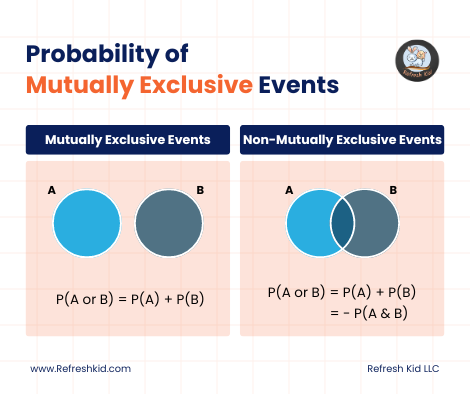The
multiplication table is a fundamental tool in mathematics that serves as the
foundation for various mathematical operations. Understanding and mastering the
multiplication table is crucial for students to develop strong mathematical
skills and problem-solving abilities. In this comprehensive guide, we will
explore the concept of the multiplication table, its historical significance,
and its relevance in today's world. We will delve into effective learning
strategies, techniques, and shortcuts that can aid in memorizing the
multiplication table. Additionally, we will examine real-life applications of
the multiplication table and how it contributes to the development of critical
thinking skills. Let's embark on this journey to unlock the potential of the
multiplication table and enhance our mathematical prowess.
2. Understanding Multiplication
2.1 What is Multiplication?
Multiplication
is an arithmetic operation that involves combining two or more numbers to find
their product. It is a process of repeated addition or counting in equal
groups. The multiplication table, also known as the times table, provides a
systematic arrangement of the products of two numbers from 1 to 10. By
memorizing the multiplication table, individuals can quickly determine the
product of any two numbers within the given range.
2.2 History of
Multiplication (H3)
The concept
of multiplication has been used throughout human history. Ancient
civilizations, such as the Egyptians and Babylonians, developed their own
methods of multiplication. The multiplication table, as we know it today, has
its roots in ancient Greek and Indian mathematics. The mathematician Pythagoras
and the ancient Indian mathematicians made significant contributions to the
understanding and development of the multiplication table.
2.3 Importance of
Multiplication (H3)
Multiplication
is a fundamental operation in mathematics that is used in various contexts,
from everyday calculations to complex mathematical problem-solving. It forms
the basis for advanced mathematical concepts and disciplines, including
algebra, geometry, and calculus. A solid understanding of multiplication is
essential for students to excel in these subjects and pursue careers in
science, technology, engineering, and mathematics (STEM) fields.
3. Learning the Multiplication Table (H2)
3.1 Why Learn the
Multiplication Table? (H3)
Mastering
the multiplication table offers several benefits to students. It provides them
with a solid foundation in arithmetic, allowing for quicker and more accurate
calculations. Understanding multiplication also facilitates the learning of
division, fractions, and decimals. Moreover, the multiplication table enhances
problem-solving skills, critical thinking abilities, and logical reasoning.
3.2 Tips for Memorizing
the Multiplication Table (H3)
Memorizing
the multiplication table may seem challenging, but with the right techniques,
it can become an enjoyable and rewarding endeavor. Here are some tips to help
you memorize the multiplication table effectively:
Visualization: Visualize the multiplication table as
a grid or a pattern. This can aid in recalling the products of various numbers.
Chunking Method: Group numbers with similar patterns
together to make memorization easier. For example, focus on the numbers ending
in 0, 1, 2, and so on.
Mnemonic Devices: Create memorable phrases or songs to
associate with each multiplication fact. This can make the memorization process
more engaging and enjoyable.
Repetition and Practice: Regularly review the multiplication
table and practice solving multiplication problems. The more you engage with
the table, the more familiar it becomes.
Interactive Learning: Utilize online resources, such as
multiplication games and apps, to make learning interactive and fun.
3.3 Benefits of Memorizing
the Multiplication Table (H3)
Memorizing
the multiplication table offers numerous benefits beyond mathematical
proficiency. It enhances mental math skills, allowing for quicker calculations
and estimations. Additionally, it boosts self-confidence and improves overall
mathematical fluency. Memorizing the multiplication table lays a strong
foundation for more advanced mathematical concepts and prepares students for
success in higher-level mathematics and standardized tests.
4. Multiplication Table Techniques and Strategies (H2)
4.1 Traditional
Multiplication Methods (H3)
Traditional
multiplication methods, such as the standard algorithm, are essential for
understanding the underlying principles of multiplication. These methods
involve multiplying each digit of one number by each digit of the other number
and subsequently adding the partial products to obtain the final result.
Understanding these techniques provides a deeper comprehension of the
multiplication process and supports mental math abilities.
4.2 Mental Math Techniques
(H3)
Mental math
techniques allow individuals to perform quick calculations mentally without
relying heavily on pen and paper or calculators. By utilizing mental math
strategies, such as breaking numbers into smaller components, factoring, or
applying properties of numbers, individuals can solve multiplication problems
rapidly and accurately. Mental math not only enhances computational speed but
also develops critical thinking skills.
4.3 Use of Manipulatives
(H3)
Manipulatives,
such as counters, base-ten blocks, or multiplication charts, can be valuable
tools for visualizing and understanding the multiplication process. They
provide a hands-on approach that aids in conceptualizing multiplication as
repeated addition or as the area of a rectangle. Manipulatives make learning
interactive and engage multiple senses, enhancing comprehension and retention
of multiplication concepts.
5. Multiplication Table Tricks and Shortcuts (H2)
5.1 Multiplying by Powers
of 10 (H3)
Multiplying
numbers by powers of 10 can be simplified using a straightforward shortcut. To
multiply a number by 10, simply add a 0 to the end of the number. For example,
multiplying 5 by 10 results in 50. Similarly, multiplying by 100 requires
adding two 0s, and so on. This technique can significantly expedite
calculations involving multiples of 10.
5.2 Multiplying by 11 (H3)
Multiplying
a two-digit number by 11 can be done using a simple trick. To obtain the
result, add the two digits of the number and place the sum in the middle, while
keeping the outer digits the same. For instance, to multiply 43 by 11, add 4
and 3 to get 7 and place it between the 4 and 3. The result is 473.
5.3 Multiplying by 9 (H3)
Multiplying
numbers by 9 has its own unique shortcut. To multiply a number by 9, subtract 1
from the number and place the result in the tens digit. Then, subtract the
original number from 9 to find the units digit. For example, to multiply 7 by
9, subtract 1 to get 6, and subtract 7 from 9 to get 2. The result is 63.
6. Common Challenges in Learning the Multiplication Table
(H2)
6.1 Overcoming Math
Anxiety (H3)
Math anxiety
is a common challenge that can hinder the learning of the multiplication table.
To overcome math anxiety, it is important to create a positive learning
environment, use practical applications of multiplication, provide support and
encouragement, and employ diverse teaching strategies that cater to different
learning styles. Regular practice and exposure to real-life examples can help
alleviate math anxiety and foster a love for mathematics.
6.2 Addressing Learning
Difficulties (H3)
Individuals
may face learning difficulties while memorizing the multiplication table. Some
strategies to address these challenges include breaking down the table into
manageable sections, using mnemonic devices or visual aids, incorporating
interactive games and activities, and providing individualized support and
guidance. Differentiated instruction can help accommodate diverse learning
needs and ensure a comprehensive understanding of multiplication concepts.
6.3 Making Learning Fun
and Engaging (H3)
To enhance
the learning experience, it is crucial to make learning the multiplication
table fun and engaging. Incorporate games, puzzles, competitions, and hands-on
activities that involve movement and interaction. Integrate technology by using
educational apps or online resources that offer interactive multiplication
practice. By creating an enjoyable learning environment, students are more
likely to stay motivated and develop a positive attitude towards
multiplication.
7. Real-Life Applications of the Multiplication Table
(H2)
7.1 Everyday Situations
(H3)
The
multiplication table finds practical applications in everyday situations. From
calculating grocery bills to determining discounts, understanding
multiplication enables individuals to manage their finances, make informed
decisions, and solve everyday mathematical problems efficiently. It is a
valuable tool for budgeting, shopping, cooking, and other daily activities.
7.2 STEM Fields and
Careers (H3)
The
importance of the multiplication table extends beyond everyday life and into
the fields of science, technology, engineering, and mathematics (STEM).
Professions such as engineering, architecture, computer science, statistics, and
finance heavily rely on mathematical calculations. A strong foundation in
multiplication provides the necessary skills for these STEM careers, allowing
individuals to excel in complex problem-solving and data analysis.
7.3 Problem-Solving and
Critical Thinking (H3)
The mastery
of the multiplication table contributes to the development of problem-solving
and critical thinking abilities. It enhances logical reasoning, pattern
recognition, and analytical skills, enabling individuals to approach problems
with a systematic and strategic mindset. The multiplication table acts as a
stepping stone towards higher-level problem-solving and cultivates a valuable
skill set applicable in various academic disciplines and real-life scenarios.
8. Frequently Asked Questions (FAQs) (H2)
8.1 How can I help my
child learn the multiplication table?
There are
several ways to support your child in learning the multiplication table:
Practice
regularly with them and create a structured study routine.
Utilize
visual aids, manipulatives, or online resources to make learning interactive.
Encourage
the use of mnemonic devices or songs to aid in memorization.
Provide
positive reinforcement and celebrate their progress and achievements.
Make
learning fun by incorporating games or challenges that involve multiplication.
8.2 Is it important to
memorize the multiplication table?
Memorizing
the multiplication table is highly beneficial. It facilitates quick mental
calculations, enhances problem-solving skills, and serves as a foundation for
advanced mathematical concepts. Memorization allows individuals to focus on
higher-level problem-solving rather than spending excessive time on basic
multiplication calculations.
8.3 Are there any tricks
for memorizing the multiplication table?
Yes, there
are various tricks and techniques to aid in memorizing the multiplication
table. Some of these include visualization, mnemonic devices, chunking,
repetition, and interactive learning methods. Experiment with different
approaches to find the ones that work best for you or your child.
8.4 What are some
real-life applications of the multiplication table?
Real-life
applications of the multiplication table include calculating prices,
determining discounts, calculating areas and volumes, understanding ratios and
proportions, and managing budgets. It is a practical tool for solving everyday
mathematical problems and making informed decisions.
8.5 How does learning the
multiplication table benefit students?
Learning the
multiplication table offers several benefits to students. It enhances
computational fluency, improves problem-solving skills, promotes logical
reasoning and critical thinking, and supports the learning of more advanced
mathematical concepts. It also boosts confidence in mathematical abilities and
prepares students for success in STEM fields and standardized tests.
Conclusion (H1)
The
multiplication table serves as a fundamental pillar of mathematical knowledge
and plays a vital role in developing strong mathematical skills. By
understanding the concept of multiplication, mastering the multiplication
table, and employing effective learning strategies, individuals can enhance
their problem-solving abilities, critical thinking skills, and logical
reasoning. The real-life applications of the multiplication table extend beyond
academic settings, making it a valuable tool for everyday calculations and
various STEM careers. Embrace the power of the multiplication table and unlock
the potential for mathematical success.








